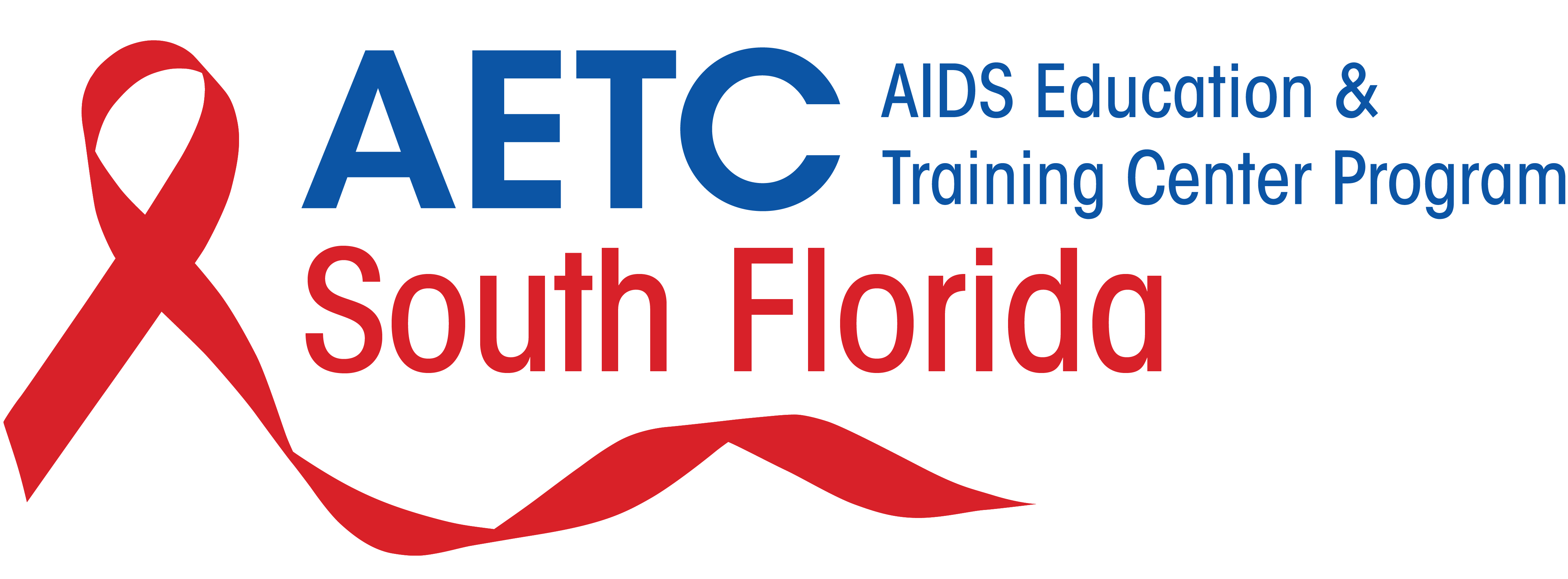
Managing drug interactions between Hepatitis C direct acting antivirals and antiretroviral therapy
By:
- Elizabeth Sherman, PharmD, AAHIVP
South Florida – Southeast AIDS Education and Training Center - Joanne Orrick, PharmD, AAHIVP
North Florida – Southeast AIDS Education and Training Center
The management of patients with hepatitis C virus (HCV) infection is rapidly evolving and is now centered on the use of direct acting antivirals (DAAs). With many recent DAA drug approvals along with a rich pipeline of investigational agents, it has become increasingly difficult for prescribers to keep up with drug interaction information. Table 1 below provides a list of FDA-approved DAAs for HCV infection. While concurrent treatment of HIV and HCV is feasible, it may be complicated by drugdrug interactions. The antiretroviral regimen may need to be modified before HCV treatment is initiated to reduce the potential for drug-drug interactions that may develop during the concurrent HIV and HCV treatment. Table 2 below provides recommendations on the concomitant use of selected drugs for treatment of HCV and HIV infection. Additional guidance on the treatment and management of HCV can be found at http://www.hcvguidelines.org/. Additional resources for HIV and viral hepatitis drug interaction information can be found at www.hep-druginteractions.org and www.hiv-druginteractions.org.
Table 1: Direct Acting Antiviral Agents for Hepatitis C |
|||
| Generic | Abbreviation | Brand | Class |
| Daclatasvir | DCV | Daklinza® | NS5A inhibitor |
| Elbasvir/Grazoprevir | EBR/GZR | Zepatier™ | NS5A inhibitor/NS3/4A protease inhibitor |
| Ledipasvir /Sofosbuvir |
LDV/SOF | Harvoni® | NS5A inhibitor/NS5B polymerase inhibitor |
| Pariteprevir/Ritonavir /Ombitasvir plus Dasabuvir |
PTV/RTV/OBV plus DSV |
Viekira Pak® | NS3/4A protease inhibitor (PTV)/PK enhancer (RTV)/NS5A inhibitor (OBV) /NS5B polymerase inhibitor (DSV) |
| Pariteprevir/Ritonavir /Ombitasvir |
PTV/RTV/OBV | Technivie® | NS3/4A protease inhibitor (PTV)/PK enhancer (RTV)/NS5A inhibitor (OBV) |
| Simeprevir | SMV | Olysio® | NS3/4A protease inhibitor |
| Sofosbuvir | SOF | Sovaldi® | NS5B polymerase inhibitor |
| Key to Symbols: |
| ✓= ARV agent and HCV drug can be used concomitantly |
| ✘= Concomitant use of ARV agent and HCV drug is not recommended |
| ? = Data on PK interactions with the ARV drug are unavailable or insufficient to make a recommendation |
Table 2: HCV Direct Acting Antivirals Interactions with Antiretrovirals (ARVs) |
|||||||
| Information adapted from DHHS Adult/Adolescent Antiretroviral Guidelines, package inserts and www.hep-druginteractions.org. Review references for any drug interactions not listed. | |||||||
| HCV Direct-Acting Antiviral Agents | |||||||
| Select ARVs by Drug Classes |
Sofosbuvir (SOF) |
Ledipasvir/sofosbuvir (LDV/SOF) |
Simeprevir (SMV) |
Paritaprevir/Ritonavir/ Ombitasvir plus Dasabuvir (PTV/RTV/OBV plus DSV) |
Paritaprevir/ Ritonavir/ Ombitasvir (PTV/RTV/OBV) |
Daclatasvir (DCV) |
Elbasvir/ Grazoprevir (EBR/GZR) |
| Nucleoside Reverse Transcriptase Inhibitors | |||||||
| Abacavir (ABC) | ✓ | ✓ | ✓ | ✓ | ✓ | ✓ | ✓ |
| Emtricitabine (FTC) | ✓ | ✓ | ✓ | ✓ | ✓ | ✓ | ✓ |
| Lamivudine (3TC) | ✓ | ✓ | ✓ | ✓ | ✓ | ✓ | ✓ |
| Tenofovir Disoproxil Fumarate (TDF) |
✓ | ✓1 | ✓ | ✓ | ✓ | ✓ | ✓ |
| Zidovudine (ZDV) | ✓ | ✓ | ✓ | ✓ | ✓ | ✓ | ✓ |
| HIV Protease Inhibitors (PIs) | |||||||
| Atazanavir (ATV) (Unboosted) |
✓ | ✓ | ✘ | ✓3 | ✘ | ✓ | ✘ |
| ATV/r, ATV/cobi | ✓1 | ✘ | ✓4 | ✘ | ✓6 | ✘ | |
| Darunavir (DRV)/r or DRV/cobi |
✓ | ✓1 | ✘ | ✘ | ✓5 | ✓ | ✘ |
| Fosamprenavir (FPV) or FPV/r |
✓ | ✓1 | ✘ | ✘ | ✘ | ✓ | ✘ |
| Lopinavir/r (LPV/r) | ✓ | ✓1 | ✘ | ✘ | ✘ | ✓ | ✘ |
| Saquinavir/r (SQV/r) | ✓ | ✓1 | ✘ | ✘ | ✘ | ✓6 | ✘ |
| Tipranavir/r (TPV/r) | ✘ | ✘ | ✘ | ✘ | ✘ | ✓6 | ✘ |
| Non-nucleoside Reverse Transcriptase Inhibitors | |||||||
| Efavirenz (EFV) | ✓ | ✓2 | ✘ | ✘ | ✘ | ✓7 | ✘ |
| Etravirine (ETR) | ✓ | ✓ | ✘ | ✘ | ✘ | ✓7 | ✘ |
| Nevirapine (NVP) | ✓ | ✓ | ✘ | ✘ | ✘ | ✓7 | ✘ |
| Rilpirivine (RPV) | ✓ | ✓ | ✓ | ✘ | ✘ | ✓ | ✓ |
| Integrase Strand Transfer Inhibitors | |||||||
| Dolutegravir (DTG) | ✓ | ✓ | ✓ | ✓ | ✓ | ✓ | ✓ |
| Elvitegravir (EVG)/cobi/TDF/FTC |
✓ | ✘ | ✘ | ✘ | ✘ | ✓6 | ✘ |
| EVG/cobi/tenofovir alafenamide (TAF)/FTC |
✓ | ✓ | ✘ | ✘ | ✘ | ✓6 | ✘ |
| EVG + PI/r (without cobi) |
Refer to recommendation for specific ritonavir-boosted PI | ||||||
| Raltegravir (RAL) | ✓ | ✓ | ✓ | ✓ | ✓ | ✓ | ✓ |
| CCR5 Antagonist | |||||||
| Maraviroc | ✓ | ✓ | ✓ | ✘ | ? | ✓ | ✓ |
References:
- Concomitant use of LDV/SOF with TDF and a ritonavir (/r)-boosted HIV PI or cobicistat (cobi)-boosted ATV or DRV may ↑ TDF exposure.
Consider alternative HCV or ARV therapy, especially in patients with ↑ risk for renal insufficiency. If concomitant use necessary, monitor for TDFassociated adverse reactions by assessing measurements of renal function (i.e., estimated creatinine clearance, serum phosphorous, urine
glucose, and urine protein) before HCV treatment and periodically during treatment. - Monitor for TDF-associated toxicity if EFV used with TDF/FTC due to ↑ TDF level
- Reduce ATV dose to 300 mg and take in AM at same time as PTV/RTV/OBV plus DSV. If ritonavir cannot be used, choose an alternative HCV
regimen. - Take ATV 300 mg in AM at same time as PTV/RTV/OBV plus DSV; discontinue RTV or COBI in HIV regimen until HCV therapy completed
- When co-administered with PTV/RTV/OBV, darunavir 800 mg (without ritonavir) should be taken at the same time as PTV/RTV/OBV
- Decrease DCV dose to 30 mg once daily
- Increase DCV dose to 90 mg once daily
